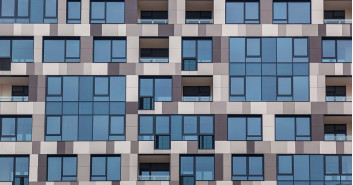Lifespan of a Modular Building
A modular building's lifespan varies, with some lasting as few as 20 years and others indefinitely—largely dependent on permanence and structural material.
Well-informed developers know modular buildings take shape through a cutting-edge and efficient process that can shrink the timeline of many large-scale commercial construction projects. Despite such growing awareness in recent years, many remain curious about certain aspects of the finished building. One of these concerns is the practical life of a modular building.
The useful life of a modular building, or the amount of time it can be expected to adequately serve its function, can range anywhere between 20 years to virtually forever.
That’s a very wide range, to say the least, but it’s because the lifespan of a given modular building depends on multiple factors that will vary, based on its specific features. The two most important in formulating this expectation are the building’s permanence and its primary structural material.
Permanence
The permanence of a modular building refers to whether it is permanent and intended to be set in place once, or temporary and is meant to be relocated multiple times throughout its lifespan. Temporary modular buildings are typically small, and serve as temporary office space or emergency medical stations, whereas permanent modular buildings are larger and commonly intended to function as hotels, schools, or apartment complexes.
Temporary modular buildings have significantly shorter lifespans than their permanent counterparts. What contributes to the shorter lifespan of temporary modular structures is their repeated assembly and disassembly, as stresses associated with taking the building apart, transporting, and rebuilding it several times progressively weaken its structural integrity.
Permanent modular buildings, on the other hand, do not undergo these repeated stresses, meaning the strength of their connections remain as strong as the day they were made.
Structural Material
Every modular building has a structural frame that supports it and forms the six sides of the unit. This can be made of a variety of materials, the most common being wood and steel.
Modular buildings built with steel structural frames have longer lifespans than those constructed of other materials, for a number of reasons:
Strength
Steel maintains a greater weight-bearing strength than other materials, particularly wood, without warping. This also enables steel modular buildings to be greater than five stories tall.
Fire Resistance
One of the greatest threats to buildings is fire damage. Unlike wood, steel is fire resistant, which makes those constructed of this material less likely to sustain severe structural damage that would impact its longevity.
Mold and Pest Resistance
Other leading threats to wooden structures are natural elements that gradually weaken the frames over time, such as mold and pests literally feeding off of the wood. Steel, on the other hand, is not affected by such actors.


